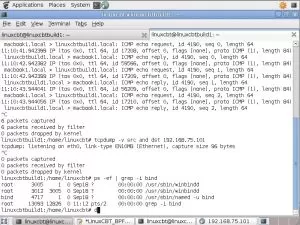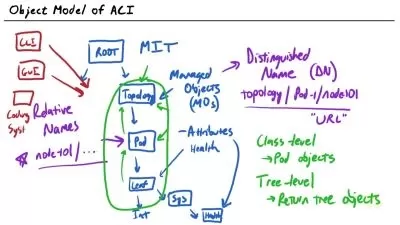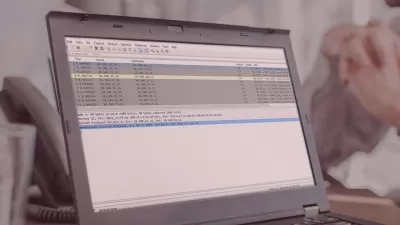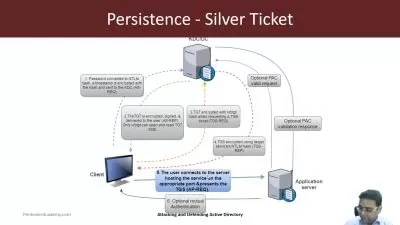Become a SOC Analyst - Level 3
Focused View
33:28:19
39 View
- Module 1 - About the Exam and Certification
- 1.1 Course Welcome and Introduction.mp403:36
- 1.2 CASP+ Overview.mp404:48
- 1.3 CASP+ Course Overview.mp402:25
- Module 2 - Security Architecture
- 2.1 Network Security Architecture Part 1.mp415:50
- 2.2 Network Security Architecture Part 2.mp411:36
- 2.3 Secure Infrastructure Design.mp410:26
- 2.4 Integrating Software Applications Part 1.mp405:24
- 2.5 Integrating Software Applications Part 2.mp408:39
- 2.6 Software Development Activities.mp408:46
- 2.7 Data Security and the Data Life Cycle.mp408:16
- 2.8 Authentication.mp407:22
- 2.9 Authorization Controls.mp411:22
- 2.10 Virtualization and Cloud Technology.mp411:48
- 2.11 Emerging Technologies.mp409:59
- Module 3 - Security Operations
- 3.1 Threat Management.mp414:10
- 3.2 Threat Management Frameworks.mp406:48
- 3.3 Indicators of Compromise.mp408:00
- 3.4 Vulnerability Management.mp411:31
- 3.5 Vulnerability Assessments.mp414:23
- 3.6 Vulnerability Risk Mitigation Part 1.mp408:43
- 3.7 Vulnerability Risk Mitigation Part 2.mp409:20
- 3.8 Techniques for Risk Reduction.mp407:57
- 3.9 Incident Response.mp406:01
- 3.10 Forensics Concepts.mp407:09
- 3.11 Forensics Tools.mp408:55
- Module 4 - Security Engineering and Cryptography
- 4.1 Enterprise Mobility Security Part 1.mp410:17
- 4.2 Enterprise Mobility Security Part 2.mp412:09
- 4.3 Endpoint Security - Hardening Part 1.mp411:36
- 4.4 Endpoint Security - Hardening Part 2.mp411:20
- 4.5 Sector-Specific Technology Security Concerns.mp408:05
- 4.6 ICS Protocols.mp408:42
- 4.7 Security Implications of Cloud Technology Adoption.mp413:30
- 4.8 Cryptography.mp413:53
- 4.9 Implementing Public Key Infrastructure.mp410:39
- 4.10 Implementing PKI Solutions.mp415:27
- 4.11 Common Certificate Implementation Issues.mp406:30
- Module 5 - Governance, Risk, and Compliance
- 5.1 Understanding Risk.mp415:26
- 5.2 The Risk Life Cycle.mp414:34
- 5.3 Vendor Risk.mp412:41
- 5.4 Governance and Compliance Part 1.mp415:23
- 5.5 Governance and Compliance Part 2.mp411:31
- 5.6 Business Impact Analysis.mp412:43
- 5.7 Disaster Recovery Plans.mp407:23
- Module 6 - Preparing for Your Exam
- 6.1 Course Recap.mp413:58
- 6.2 Study Strategies.mp404:36
- 6.3 Exam Time - Strategies for Success.mp406:48
- Resources
- CASP Glossary.pdf
- CASP Resources.pdf
- CASP Syllabus.pdf
- Module 1 - Introduction
- 1.1 Introduction.mp407:33
- 1.2 An Introduction to OWASP.mp407:10
- 1.3 The OWASP Top 10.mp411:17
- 1.4 OWASP Web Security Testing Guide (WSTG).mp407:09
- 1.5 Using Intercepting Proxies in Web Application Security Testing.mp411:19
- 1.6 Video Demonstration of Using Intercepting Proxies.mp411:54
- 1.7 Video Demonstration of Using OWASP Mutillidae.mp402:40
- Resources
- OWASP Top 10 2021 Complete Syllabus.pdf
- Module 1 - Introduction
- 1.1 Intro Part 1.mp423:32
- 1.2 Intro Part 2.mp409:41
- 1.3 Intro Part 3.mp408:05
- Module 2 - Lab Setup
- 2.1 Lab Setup Part 1.mp401:45
- 2.2 Lab Setup Part 2.mp421:22
- 2.3 Lab Setup Part 3.mp418:40
- Module 3 - Dynamic Analysis Part 1
- 3.1 Dynamic Analysis Part 1.1.mp404:55
- 3.2 Dynamic Analysis Part 1.2.mp425:42
- 3.3 Dynamic Analysis Part 1.3.mp414:09
- Module 4 - Dynamic Analysis Part 2
- 4.1 Dynamic Analysis Part 2.1.mp410:55
- 4.2 Dynamic Analysis Part 2.2.mp430:05
- Module 5 - Basic Static Analysis
- 5.1 Basic Static Analysis Part 1.mp438:37
- 5.2 Basic Static Analysis Part 2.mp433:39
- 5.3 Basic Static Analysis Part 3.mp446:06
- 5.4 Basic Static Analysis Part 4A.mp432:20
- 5.5 Basic Static Analysis Part 4B.mp402:58
- 5.6 Basic Static Analysis Part 5.mp420:40
- 5.7 Basic Static Analysis Part 6.mp441:30
- Module 6 - Packers
- 6.1 Packers Part 1.mp419:37
- 6.2 Packers Part 2.mp405:43
- 6.3 Packers Part 3.mp423:11
- 6.4 Packers Part 4.mp424:46
- 6.5 Packers Part 5.mp408:11
- Module 7 - Malware Defenses
- 7.1 Malware Defenses Part 1.mp410:22
- 7.2 Malware Defenses Part 2.mp447:56
- 7.3 Malware Defenses Part 3.mp424:59
- Resources
- Intro to Malware Analysis and Reverse Engineering Glossary 1 .pdf
- Intro to Malware Analysis and Reverse Engineering Study Guide 1 .pdf
Resources.zip
- Module 1 - Basic Assembly
- 1.1 Template and Setup.mp408:07
- 1.2 Introduction to Assembly.mp407:48
- 1.3 Architecture, Registers, and Protected Mode.mp413:02
- 1.4 Binary, 2s Complement and Hexadecimal.mp407:44
- 1.5 Assembly Template.mp407:00
- 1.6 Instructions, Directives and Generating a Listing.mp414:57
- 1.7 Logical Operators and Memory Layout.mp415:15
- 1.8 Segments and Functions.mp409:58
- 1.9 Sign Extend, Zero Extend, Multiple, Divide.mp411:43
- 1.10 Multiply and Divide Examples.mp406:55
- 1.11 Compare, Conditionals and Jumps.mp411:02
- 1.12 Skeleton and Loop Example.mp411:17
- 1.13 Shift Left and Right.mp409:13
- 1.14 Arithmetic Shift.mp410:35
- 1.15 Module 1 Review.mp405:12
- Module 2 - Indirect Addressing, Stack, Arrays and Strings
- 2.1 Indirect Addressing and Variables Part 1.mp406:00
- 2.2 Indirect Addressing and Variables Part 2.mp403:11
- 2.3 Slack Intro Part 1.mp406:59
- 2.4 Slack Intro Part 2.mp401:56
- 2.5 Stack Usage.mp407:38
- 2.6 Simple Function Example.mp411:18
- 2.7 Function Prologue.mp403:21
- 2.8 Function Epilogue.mp408:16
- 2.9 Function Arguments.mp408:40
- 2.10 Saving Registers.mp409:32
- 2.11 More Complicated Function.mp414:46
- 2.12 Calling Conventions.mp408:31
- 2.13 Local Variables.mp406:21
- 2.14 Local Variables Example.mp412:19
- 2.15 Enter and Leave.mp405:02
- 2.16 Enter and Leave Example Conversion.mp404:52
- 2.17 Floating Point.mp407:08
- 2.18 Floating Point Circle Example.mp410:04
- 2.19 Floating Point Comparison.mp406:16
- 2.20 Floating Point Comparison Example.mp409:37
- 2.21 Max of Three Numbers.mp412:34
- 2.22 Conditional Move.mp408:17
- 2.23 Conditional Move Max Example.mp406:44
- 2.24 Arrays.mp411:19
- 2.25 Arrays Examples.mp406:19
- 2.26 String Instructions.mp407:10
- 2.27 Strings Uppercase Example.mp409:38
- Module 3 - ARM Architecture
- 3.1 ARM Intro.mp411:42
- 3.2 ARM Template.mp406:06
- 3.3 ARM Math and Data Movement.mp408:24
- 3.4 Branching, If, While, Shift.mp408:49
- 3.5 Shift Example.mp407:20
- 3.6 Memory, Offsets, Debugging and Listing.mp410:53
- 3.7 Pushing and Popping.mp405:34
- 3.8 Push Example.mp405:29
- 3.9 Array Indexing.mp408:30
- 3.10 Array Indexing Example.mp404:55
- 3.11 ARM Multiple Load and Store.mp405:57
- 3.12 ARM Load and Store Multiple Examples.mp406:00
- 3.13 VFP and Neon.mp415:23
- 3.14 Neon Example.mp412:43
- 3.15 Neon Floating Point.mp406:29
- 3.16 Neon Floating Point Example.mp407:52
- 3.17 SIMD Load and Store Data.mp408:32
- 3.18 SIMD Process Data.mp408:48
- 3.19 SIMD Encryption Example.mp411:28
- 3.20 Thumb Mode.mp404:54
- 3.21 Thumb Mode Example.mp414:50
- 3.22 Conditional Execution.mp407:30
- 3.23 Conditional Execution Example.mp408:52
- 3.24 IT Block Assembly.mp405:10
- 3.25 IT Block Example.mp407:32
- Module 4 - C Constructs and Interrupts
- 4.1 Tools for Code, Reverse Engineering.mp408:45
- 4.2 Reverse Engineering Process.mp407:40
- 4.3 Setup Reverse Engineering Lab.mp408:07
- 4.4 Structures and Unions.mp405:36
- 4.5 Structure Layout.mp405:10
- 4.6 Structure Creation - Reverse Engineering.mp407:01
- 4.7 Structures, Unions and Malloc.mp409:21
- 4.8 Structures, Unions and Malloc Example.mp406:40
- 4.9 Jump Tables and Switch Statements.mp405:43
- 4.10 Jump Table Example.mp408:17
- 4.11 Function Pointers.mp407:22
- 4.12 Function Pointers Example.mp407:01
- 4.13 Inline Assembly.mp409:38
- 4.14 Inline Assembly Example.mp410:12
- 4.15 Assembly with C.mp410:08
- 4.16 SysCall and Interrupts.mp408:06
- 4.17 Interrupts Example Use Fork.mp408:26
- 4.18 Strings in C.mp405:43
- 4.19 Integers in Assembly.mp407:38
- 4.20 64-Bit Assembly.mp410:09
- 4.21 MMX, SSE, AES-NI.mp409:49
- 4.22 AES Implementations.mp408:45
- 4.23 Implement Dump Registers.mp418:12
- 4.24 Static and Dynamic Linking Assembly.mp406:56
- 4.25 Shared Library.mp407:48
- 4.26 Shared Library Example.mp412:52
- Module 1 - BSWJ - binwalk
- 1.1 BSWJ - binwalk.mp404:05
Resources.zip
- Module 1 - Mapping to ATT&CK
- 1.1 Introduction - Challenges, .mp413:47
- 1.2 Finding and Researching the Behavior.mp407:44
- 1.3 Translating the Behavior into a Tactic.mp410:23
- 1.4 Identifying Techniques or Sub-Techniques.mp412:41
- 1.5 Mapping to a Narrative Point.mp410:02
- 1.6 Hedging Your Biases.mp410:49
- Module 2 - Mapping to ATT&CK
- 2.1 The Process of Mapping from Raw Data.mp405:41
- 2.2 Identify and Research Behaviors.mp405:18
- 2.3 Translate Behaviors to Tactics, Techniques and Sub-Techniques.mp404:45
- 2.4 Raw Data to Narrative Reporting.mp408:45
- Module 3 - Storing and Analyzing ATT&CK
- 3.1 Storing and Displaying ATT&CK-Mapped Data.mp403:17
- 3.2 Expressing and Storing ATT&CK-Mapped Data.mp403:52
- 3.3 Analyzing ATT&CK-Mapped Data.mp405:06
- 3.4 Exercise 3 - Comparing Layers in ATT&CK Navigator.mp401:58
- Module 4 - Making Defensive
- 4.1 The Defensive Recommendations Process.mp405:28
- 4.2 How Techniques and Sub-Techniques are Being Used.mp408:40
- 4.3 Researching Organizational.mp409:46
- 4.4 Make Defensive Recommendations.mp412:56
More details
User Reviews
Rating
average 0
Focused display

Cybrary
View courses CybraryCybrary, Inc., is a crowdsourced free online IT and Cyber Security training and career development platform for people around the world. Founded in January 2015, the company has a myriad of courses spanning from beginner to expert level in areas such as IT Fundamentals, Malware Analysis, Python Scripting, Incident Response, and much more. For a full list of courses and other resources, visit the Cybrary Catalog.
- language english
- Training sessions 191
- duration 33:28:19
- English subtitles has
- Release Date 2024/01/27


















